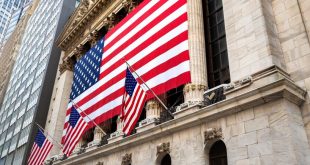Overview of the Legislative Proposal
In June 2025, President Donald Trump’s proposed tax and spending bill, dubbed the “One Big Beautiful Bill,” has emerged as a cornerstone of his second-term economic agenda. This ambitious legislation aims to permanently extend the 2017 Tax Cuts and Jobs Act (TCJA), which reduced corporate tax rates to 21% and individual income taxes, provisions now nearing expiration. New measures include eliminating taxes on tips, overtime pay, and Social Security benefits for seniors, alongside a temporary doubling of the child tax credit to $5,000 per child and a 15% increase in the standard deduction through 2030. On the spending side, the bill allocates $5.7 billion for border wall construction and $10 billion for mass deportation programs, while boosting military funding by $120 billion annually. However, it proposes significant cuts, including $1.2 trillion from Medicaid, $500 billion from food assistance programs, and $300 billion from clean energy incentives over a decade, sparking widespread debate about its priorities.
Fiscal and Economic Consequences
The bill’s fiscal footprint is substantial, with the Congressional Budget Office projecting an additional $3.3 trillion (Senate version) to $4.8 trillion (House version) in federal debt over the next 10 years, pushing the national debt beyond its current $36.2 trillion. These figures stem from deficit-financed tax cuts and spending increases, raising concerns about long-term fiscal sustainability. A proposed 10% universal tariff on imports, with 25% tariffs on specific goods like Chinese electronics and steel, is expected to generate $2 trillion in revenue. However, economic models suggest these tariffs could reduce GDP growth by 0.5% annually and increase inflation by 1.2%, as businesses pass higher costs to consumers. The potential for stagflation—a mix of stagnant growth and rising prices—has alarmed economists, particularly as the Federal Reserve signals tighter monetary policy to curb inflationary pressures.
Financial Market Reactions
Financial markets have responded with a blend of optimism and caution. The tax cuts, particularly for corporations and high earners, have fueled gains in sectors poised to benefit from increased investment. For instance, energy firms like ExxonMobil have risen 8% in June 2025, while industrial giants like Caterpillar gained 6%, driven by expectations of higher profits and domestic production incentives. Conversely, the bill’s deficit spending has pushed 30-year Treasury yields to 4.7%, a 20-year high, as investors demand higher returns to offset rising debt risks. This yield spike has increased borrowing costs, with mortgage rates climbing to 7.1%, impacting housing affordability. Trade-sensitive sectors, such as consumer goods and retail, have seen declines of 3–5%, reflecting fears of tariff-driven cost increases. Market volatility indices, like the VIX, have risen 2%, signaling investor unease as legislative uncertainties persist.
Political and Legislative Dynamics
The bill faces a contentious path through Congress, with a July 4, 2025, deadline intensifying Senate debates. Internal Republican divisions, particularly over the $1.2 trillion Medicaid cuts and $500 billion reduction in food assistance, have stalled progress. Senate Majority Leader John Thune’s push for deeper spending reductions to offset the deficit has clashed with moderates like Senator Susan Collins, who advocate for preserving social programs. Public sentiment, with 65% of Americans opposing the bill in recent polls due to its deficit impact and social program cuts, adds further pressure. The reconciliation process between the House and Senate versions remains a critical hurdle, as amendments addressing border security funding or tariff adjustments could alter the bill’s economic impact. These political dynamics are closely watched by markets, as prolonged gridlock could exacerbate economic uncertainty.
Broader Economic and Market Outlook
The bill’s outcome will significantly influence the U.S. economic landscape in 2025 and beyond. A swift resolution could stabilize Treasury yields around 4.7% and bolster equity markets, particularly in sectors like energy and defense, which are projected to gain 10–12% in market value if the bill passes. However, extended delays or a failure to reconcile House and Senate versions could push yields toward 5%, further straining borrowing costs and dampening consumer spending. Investors are increasingly favoring defensive assets, with utility stocks up 4% and gold prices rising 3% in June 2025 as safe-haven investments. The interplay of public opposition, political negotiations, and fiscal concerns will shape the bill’s final form, with ripple effects on inflation, GDP growth, and market stability. As Congress navigates these challenges, the financial markets remain on edge, awaiting clarity on this transformative legislation.

 Noor Trends News, Technical Analysis, Educational Tools and Recommendations
Noor Trends News, Technical Analysis, Educational Tools and Recommendations




